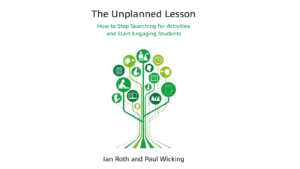Book Review: Why NNESTs? by Erzsebet Bekes and Marcela Carrasco
Thanks to Silvana Richardson’s plenary talk at IATEFL 2016 conference in Birmingham, the issue of discrimination against NNESTs in ELT is no longer a neglected cause. For those who might have joined the ELT community recently, NNESTs stands for non-native English speaking teachers. What factors shape the identity of a non-native English teacher? How has the development of English as an international language affected the teaching-learning scenario in ELT classrooms? Is the native-speaker level model still relevant? Why is there rampant discrimination against NNESTs in the ELT job market when the majority of English learners do not reside in English speaking countries? What practical solutions could there be to address this issue?
Bekes and Carrasco discuss these questions in their book “Why NNESTs? International English and the Implications for Teacher Development”, which is published by Academic Study Kit as a part of the Legacy Series. Inspired by another book in the same series on teacher identity by Helen Waldron, the authors seek to present an NNEST perspective on teacher identity. As an NNEST myself, I am delighted to do the review.
Bekes and Carrasco, two highly experienced and fully competent non-native English speaking teachers, discuss the issues facing ELT professionals in a world where English has become an international language. The fact that there are more than 1.5 billion non-native speakers of English around the globe has undeniably affected English language teaching methodology. The book covers the emerging aspects of the discussions on English language teacher identities, biased hiring practices and the changing landscape of ELT pedagogy in a fairly balanced manner. It is a thought-provoking resource that clarifies and adds to the ongoing NESTs-NNESTs discussions in the contemporary global ELT professional community.
Bekes and Carrasco share their own fascinating stories of learning and teaching English as NNESTs. Describing themselves as life-long learners of English, they have enriching experiences of teaching English in multilingual and multicultural communities across the world. They also share stories of two other NNESTs who overcame discrimination and challenges of the ELT industry and established themselves as successful English teachers. These personal narratives convey a deep sense of authenticity, resilience and courage that could be a source of inspiration for all English teachers. Most importantly they tell you to embrace your identity as an NNEST with honesty and enthusiasm.
The authors do not shy away from pointing out that many NNESTs are not proficient enough to teach English. They suggest that teachers’ professional development programs should include courses on improving language proficiency. They offer some practical tips for NNESTs to improve their language proficiency and build confidence. Teachers’ associations at local and global level should join hands to raise professional standards and support all English teachers.
The authors believe that both NESTs and NNESTs should come together to prevent unfair hiring practices and to ensure equal rights for all ELT professionals. Efficiently calculating the language exposure time for NESTs, they make it clear that an NEST has clear advantage in terms of hours of exposure to English language in a meaningful context. It is unfair and demoralizing to expect an NNEST to achieve native-like proficiency. Besides, the native speaker model is redundant in a world where the majority of English speakers are non-natives and about eighty percent of the conversation in English goes on between non-native speakers. The focus should be on developing international communicative competence rather than on achieving native-like proficiency.
As an NNEST from India, my own story might resonate with those who come from places where English is a second language and its use is mostly limited to academic settings. I grew up in a small town in North India where no one spoke English for social interaction. I studied English as a third language in school and it was not the medium of instruction till college. I actually got to speak English when I joined university but even then we did not talk in English among friends. I do not see English as the language of former colonizers of India but as my second language. In this aspect I am rather different from some of my contemporaries in India. I do identify with NNESTs but I have never been made to feel inferior for being a competent user of English. All of my English teachers were NNESTs and they were excellent role models for a young language learner like me. In India, a competent English teacher gets a job irrespective of their place of origin or their first language.
However, it must be acknowledged that this is not the experience of many NNESTs. The stark difference between the status of NESTs and NNESTs hits home when the latter lose job opportunities due to their countries of origin, race, or colour. I believe it does not take much to see how shallow the basis of this discrimination is. Arguments justifying this bias do not hold water. It does not matter where the teacher was born or which passport they hold. We cannot identify effective language teachers just by checking their linguistic competence or simply by testing their knowledge of English culture but by considering pedagogical, ethical, and professional aspects of their teaching practices. Teaching is not merely a mechanical work of transferring knowledge from one person to another as if pouring it from one vessel into another. It is a work of heart where the most effective teachers are the ones who capture the imagination of their students and motivate them to reach their maximum potential. I’d like to quote P.J. Palmer who so eloquently explained this in his book ‘The Courage to Teach’,
“The connections made by good teachers are held not in their methods but in their hearts – meaning heart in its ancient sense, as the place where intellect and emotion and spirit and will converge in the human self.” (Palmer, 1998)
‘Why NNESTs?’ is a slim volume that can be read in a single sitting but it will prompt the reader to reflect about their own teaching identity and to ponder upon the challenges of being an NNEST. Whether you are new to this debate or an old advocate for this cause, you will find this an engaging read. The authors take turns to share their stories. This helps in maintaining the distinct voice of each author though it may seem jarring to some. Their only limitation is that they speak from the perspective of NNESTs based in Europe or Latin America. It would be wonderful if other English teachers, for example from the Middle East, South East Asia or South Asia, would join this discussion and share their stories with the global ELT community.
References:
Palmer, P. J. (1998). The courage to teach: Exploring the inner landscape of a teacher’s life. San Francisco, CA: Jossey-Bass.




